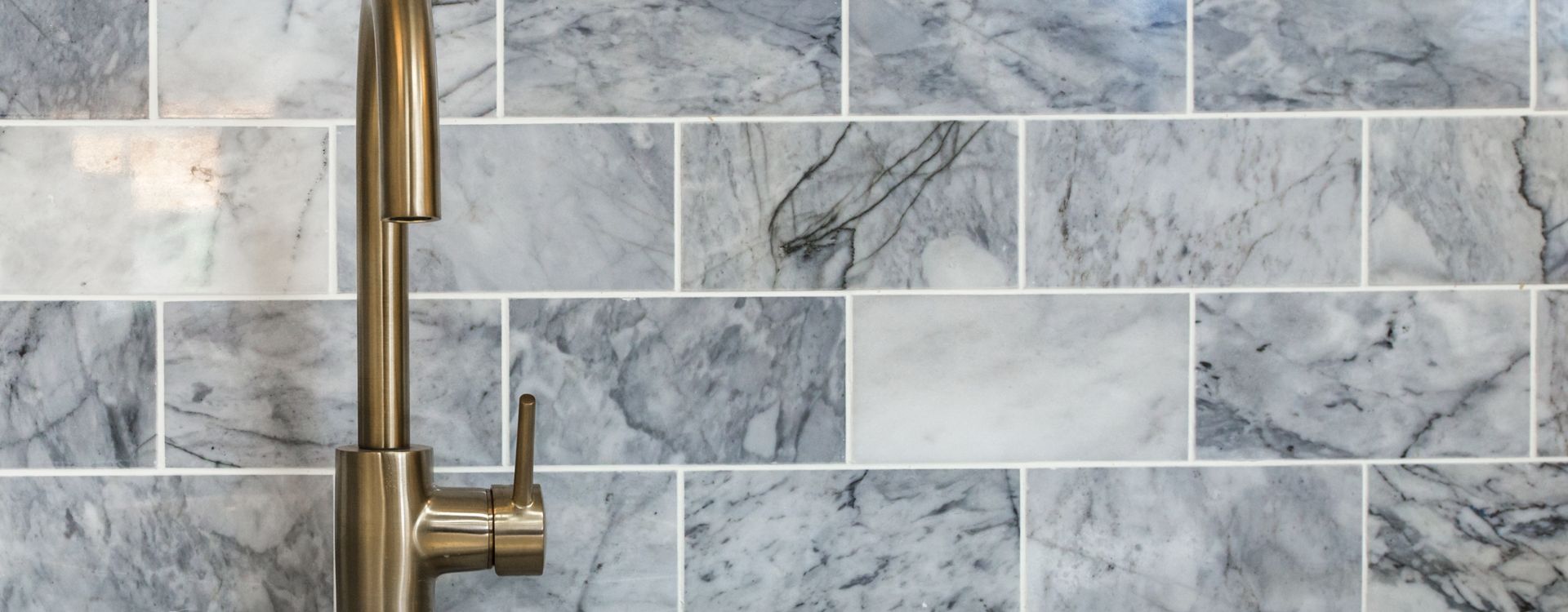How to Clean Grout like a Pro

While clean grout lines contribute to the look of a space, keeping them clean is more than a simple aesthetic consideration. Grout is porous and can easily harbor bacteria, mold, and mildew, especially in damp areas like bathrooms and kitchens. Regular cleaning helps prevent these harmful microorganisms from growing and keeps your grout lines looking like new.
In this article, we will go over the simple process of how to clean tile grout, step by step.
What You'll Need
- Rubber gloves
- Knee pads
- Vacuum or broom
- Sponge
- Baking soda
- Hydrogen peroxide
- Dish soap
- Commercial grout cleaner
- Grout brush or old toothbrush
- Bucket
- Towel
How to Clean Tile Grout
Whether you’re scrubbing bathroom tile grout, tackling an entryway floor, or keeping your kitchen backsplash looking like new, the following steps will apply.
01
Prepare the Surface
For cleaning floor tile grout: Move any furniture out of the way to ensure thorough cleaning across the entire floor. Next, sweep or vacuum the floor to remove any loose dirt or debris. This will help prevent scratching the tile while you clean.
For cleaning shower tile grout: Use hot water and a sponge to wipe down the entire tile surface. This removes any surface dirt or grime on the tiles themselves. Once you are finished scrubbing, give the surface another rinse with hot water.
02
Apply the Cleaning Solution
There are two options here:
DIY paste. For a homemade option, mix 1/2 cup baking soda, 1/4 cup hydrogen peroxide, and 1 tablespoon of dish soap into a paste. Apply the paste to grout lines using a grout brush or toothbrush. Let it sit for 5 to 10 minutes.
Commercial cleaner. Follow the manufacturer's instructions on the label for application and dilution (if required). Generally, you'll apply the cleaner directly to the grout lines and let it sit for a recommended time.
Tip: Before applying any cleaning solution, test it on a small, inconspicuous area of the grout to make sure it doesn't cause any discoloration.
03
Scrub the Grout
Use a grout brush or an old toothbrush to scrub the grout lines. Be sure the brush you are using has firm bristles, as a brush with flimsy bristles will not effectively remove the dirt and may result in scraping the grout with the handle.
Focus on one small area at a time and apply firm pressure. Pay extra attention to stubborn or heavily soiled areas. If needed, repeat the application of the cleaning solution and continue scrubbing until the grout is clean.
For tiled walls—like backsplashes, tub surrounds and showers—start at the top of the wall and work your way down.
For scrubbing floor tile grout, work backwards towards the door, starting from the farthest corner of the space. Use knee pads or a cushion to protect your knees while scrubbing, especially if you are cleaning a large area.
04
Rinse the Area
After scrubbing, use a damp microfiber cloth or sponge to wipe away any remaining cleaning solution residue along with the lifted dirt. Next, rinse the entire surface with clean water using a sponge (for walls) or a mop (for floors). Finally, dry the surface thoroughly with a clean towel to prevent water spots or mildew growth.
Tip: Apply grout sealer as needed after deep cleaning to protect from stains and moisture.